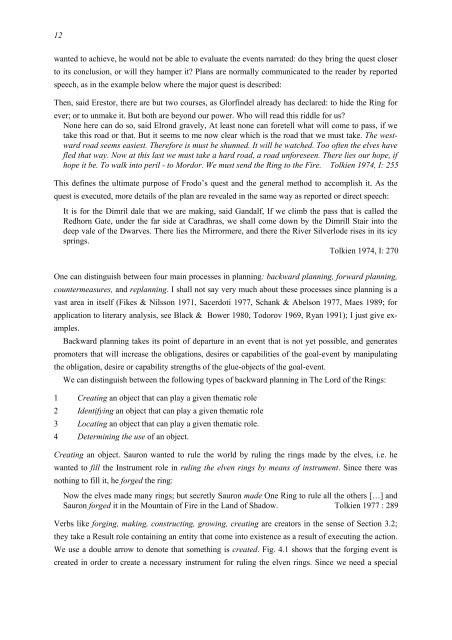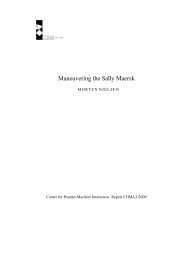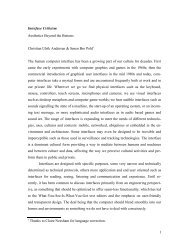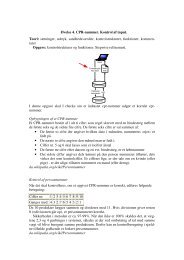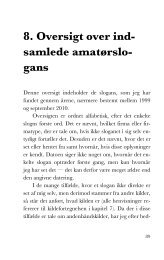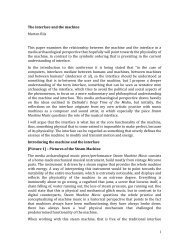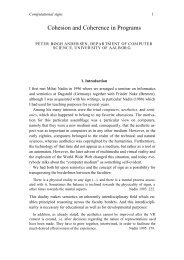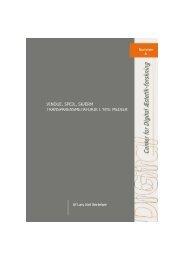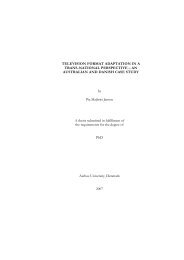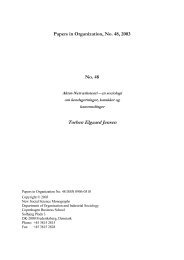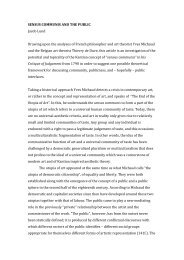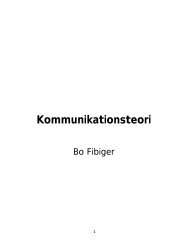Interaction and narration. Tearing Tolkien apart - CiteSeerX
Interaction and narration. Tearing Tolkien apart - CiteSeerX
Interaction and narration. Tearing Tolkien apart - CiteSeerX
You also want an ePaper? Increase the reach of your titles
YUMPU automatically turns print PDFs into web optimized ePapers that Google loves.
12<br />
wanted to achieve, he would not be able to evaluate the events narrated: do they bring the quest closer<br />
to its conclusion, or will they hamper it? Plans are normally communicated to the reader by reported<br />
speech, as in the example below where the major quest is described:<br />
Then, said Erestor, there are but two courses, as Glorfindel already has declared: to hide the Ring for<br />
ever; or to unmake it. But both are beyond our power. Who will read this riddle for us?<br />
None here can do so, said Elrond gravely, At least none can foretell what will come to pass, if we<br />
take this road or that. But it seems to me now clear which is the road that we must take. The westward<br />
road seems easiest. Therefore is must be shunned. It will be watched. Too often the elves have<br />
fled that way. Now at this last we must take a hard road, a road unforeseen. There lies our hope, if<br />
hope it be. To walk into peril - to Mordor. We must send the Ring to the Fire. <strong>Tolkien</strong> 1974, I: 255<br />
This defines the ultimate purpose of Frodo’s quest <strong>and</strong> the general method to accomplish it. As the<br />
quest is executed, more details of the plan are revealed in the same way as reported or direct speech:<br />
It is for the Dimril dale that we are making, said G<strong>and</strong>alf, If we climb the pass that is called the<br />
Redhorn Gate, under the far side at Caradhras, we shall come down by the Dimrill Stair into the<br />
deep vale of the Dwarves. There lies the Mirrormere, <strong>and</strong> there the River Silverlode rises in its icy<br />
springs.<br />
<strong>Tolkien</strong> 1974, I: 270<br />
One can distinguish between four main processes in planning: backward planning, forward planning,<br />
countermeasures, <strong>and</strong> replanning. I shall not say very much about these processes since planning is a<br />
vast area in itself (Fikes & Nilsson 1971, Sacerdoti 1977, Schank & Abelson 1977, Maes 1989; for<br />
application to literary analysis, see Black & Bower 1980, Todorov 1969, Ryan 1991); I just give examples.<br />
Backward planning takes its point of departure in an event that is not yet possible, <strong>and</strong> generates<br />
promoters that will increase the obligations, desires or capabilities of the goal-event by manipulating<br />
the obligation, desire or capability strengths of the glue-objects of the goal-event.<br />
We can distinguish between the following types of backward planning in The Lord of the Rings:<br />
1 Creating an object that can play a given thematic role<br />
2 Identifying an object that can play a given thematic role<br />
3 Locating an object that can play a given thematic role.<br />
4 Determining the use of an object.<br />
Creating an object. Sauron wanted to rule the world by ruling the rings made by the elves, i.e. he<br />
wanted to fill the Instrument role in ruling the elven rings by means of instrument. Since there was<br />
nothing to fill it, he forged the ring:<br />
Now the elves made many rings; but secretly Sauron made One Ring to rule all the others […] <strong>and</strong><br />
Sauron forged it in the Mountain of Fire in the L<strong>and</strong> of Shadow. <strong>Tolkien</strong> 1977 : 289<br />
Verbs like forging, making, constructing, growing, creating are creators in the sense of Section 3.2;<br />
they take a Result role containing an entity that come into existence as a result of executing the action.<br />
We use a double arrow to denote that something is created. Fig. 4.1 shows that the forging event is<br />
created in order to create a necessary instrument for ruling the elven rings. Since we need a special


